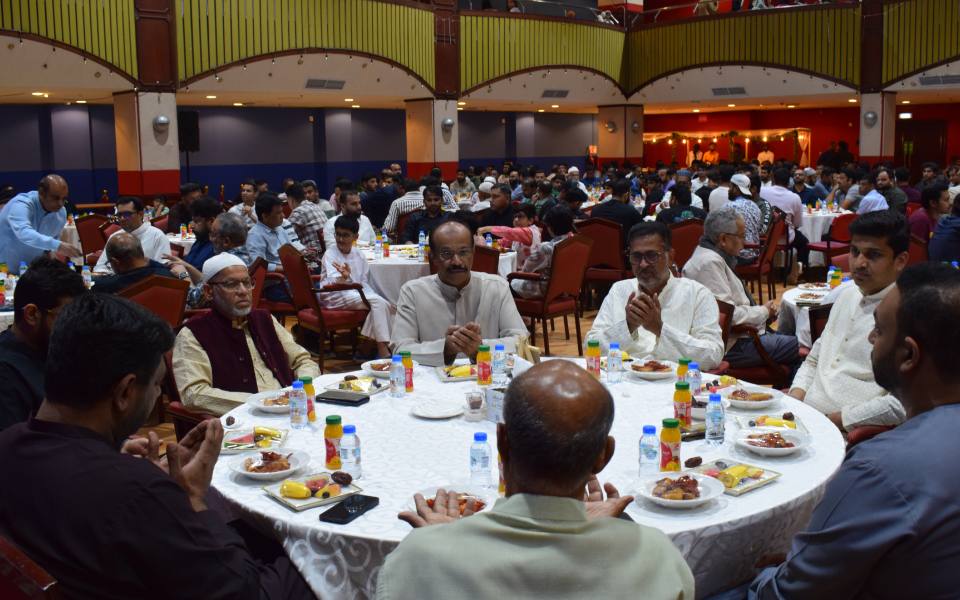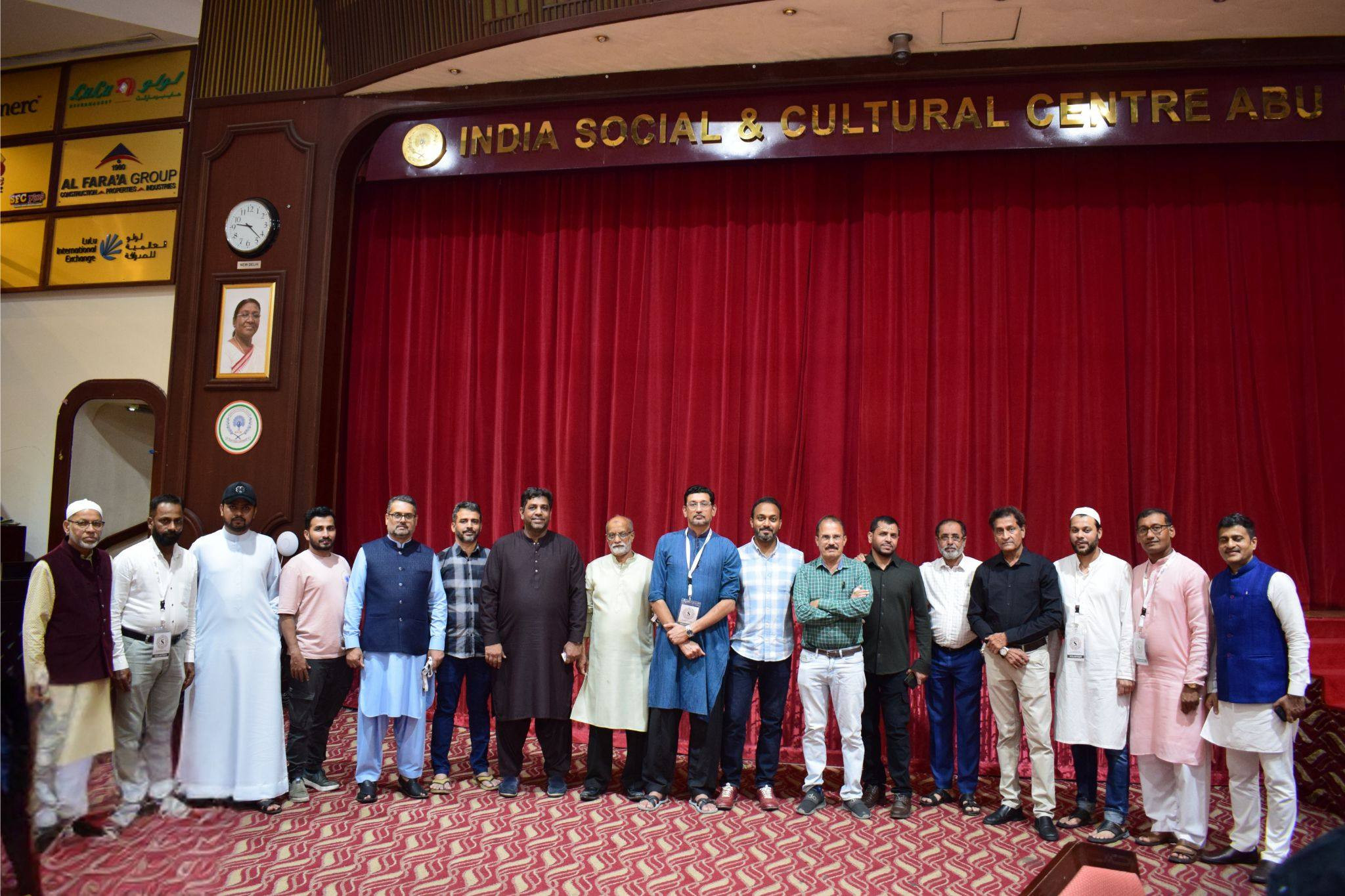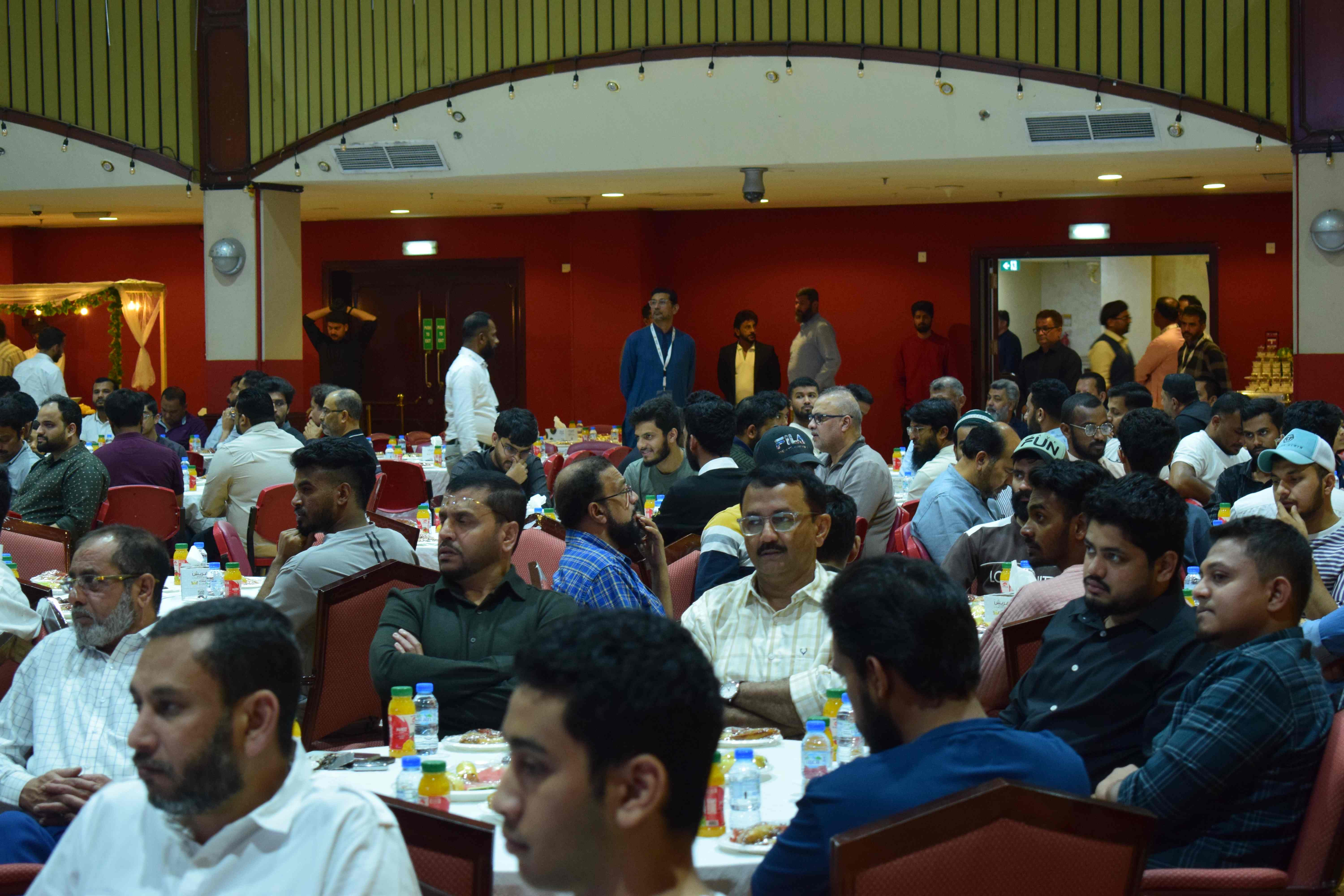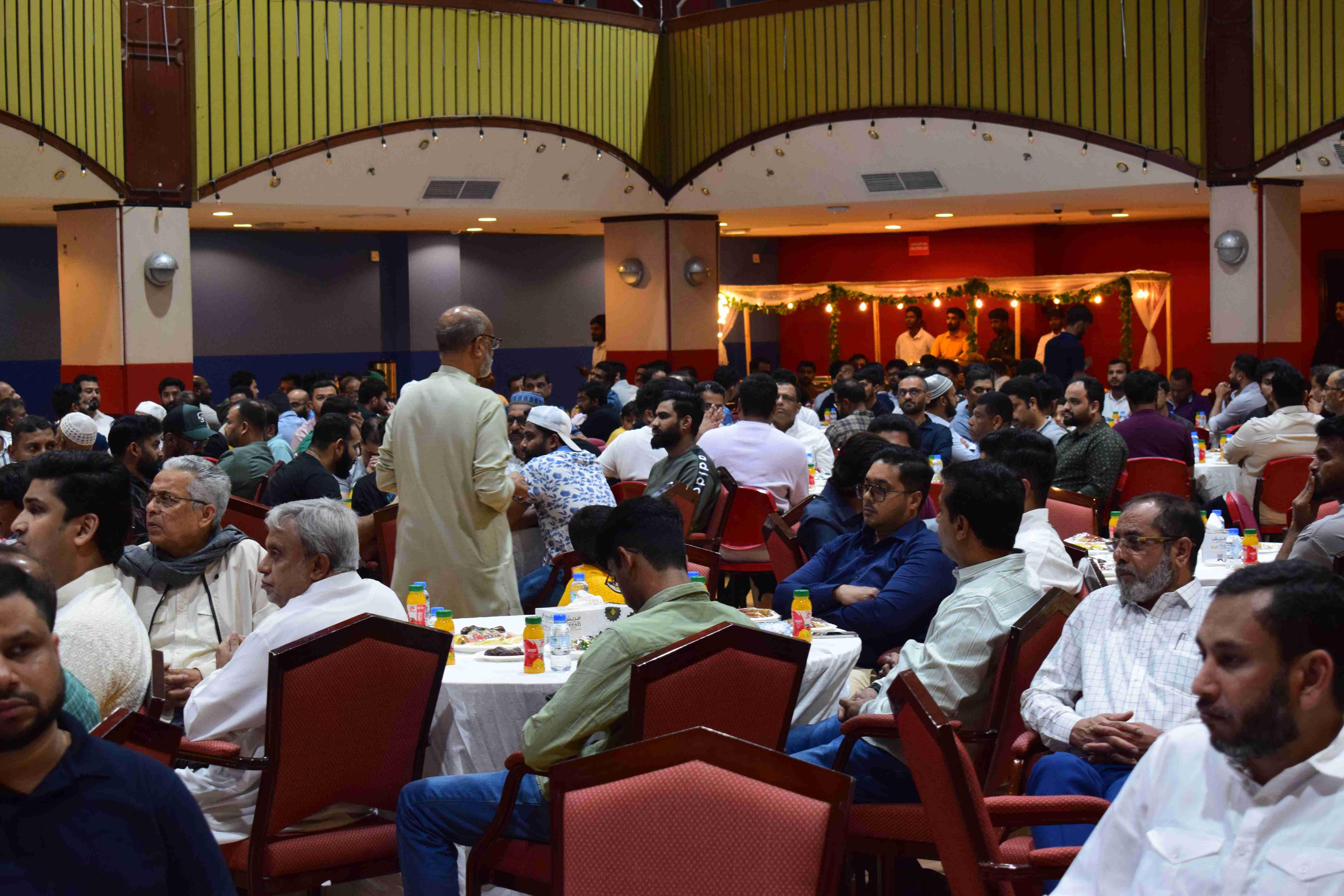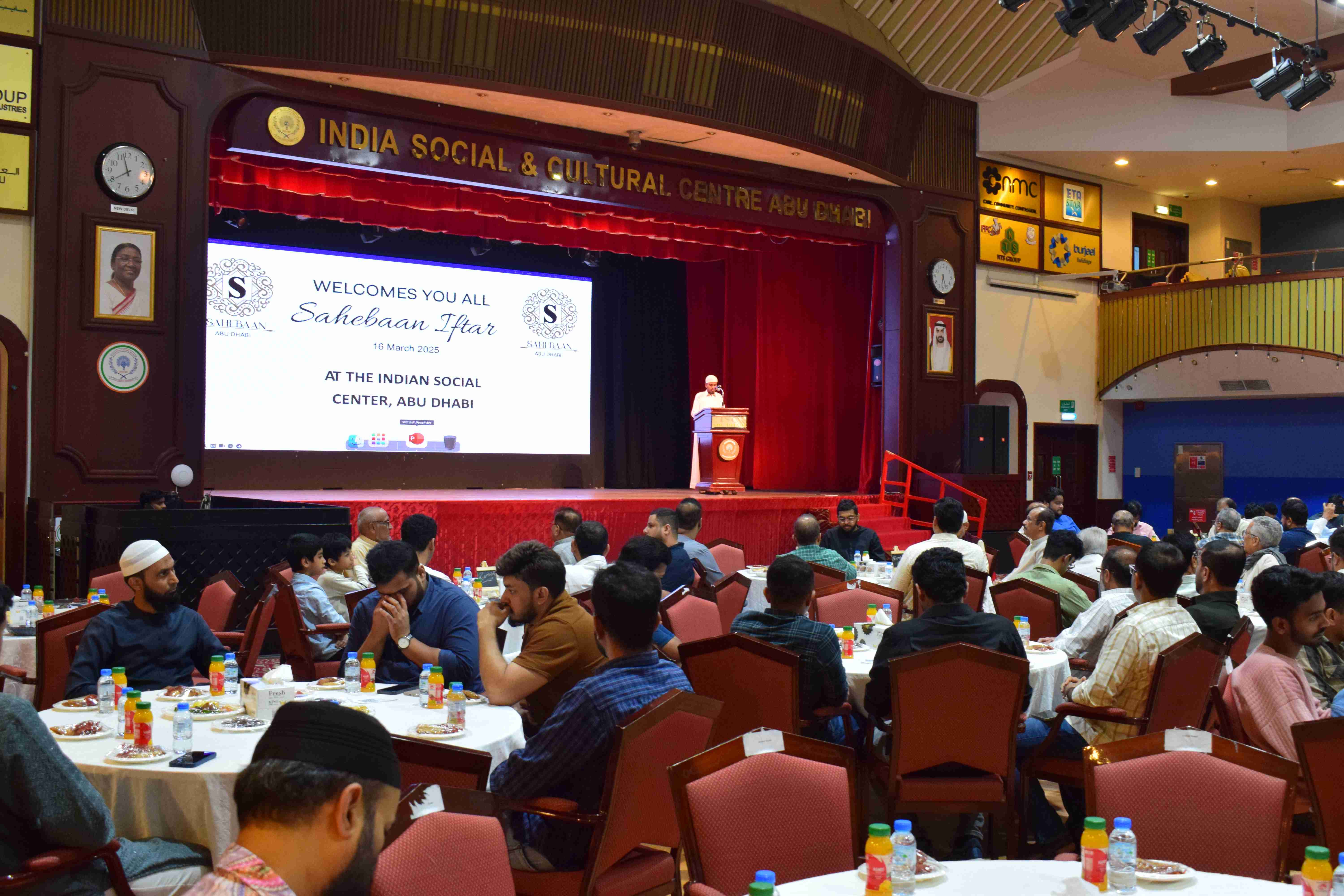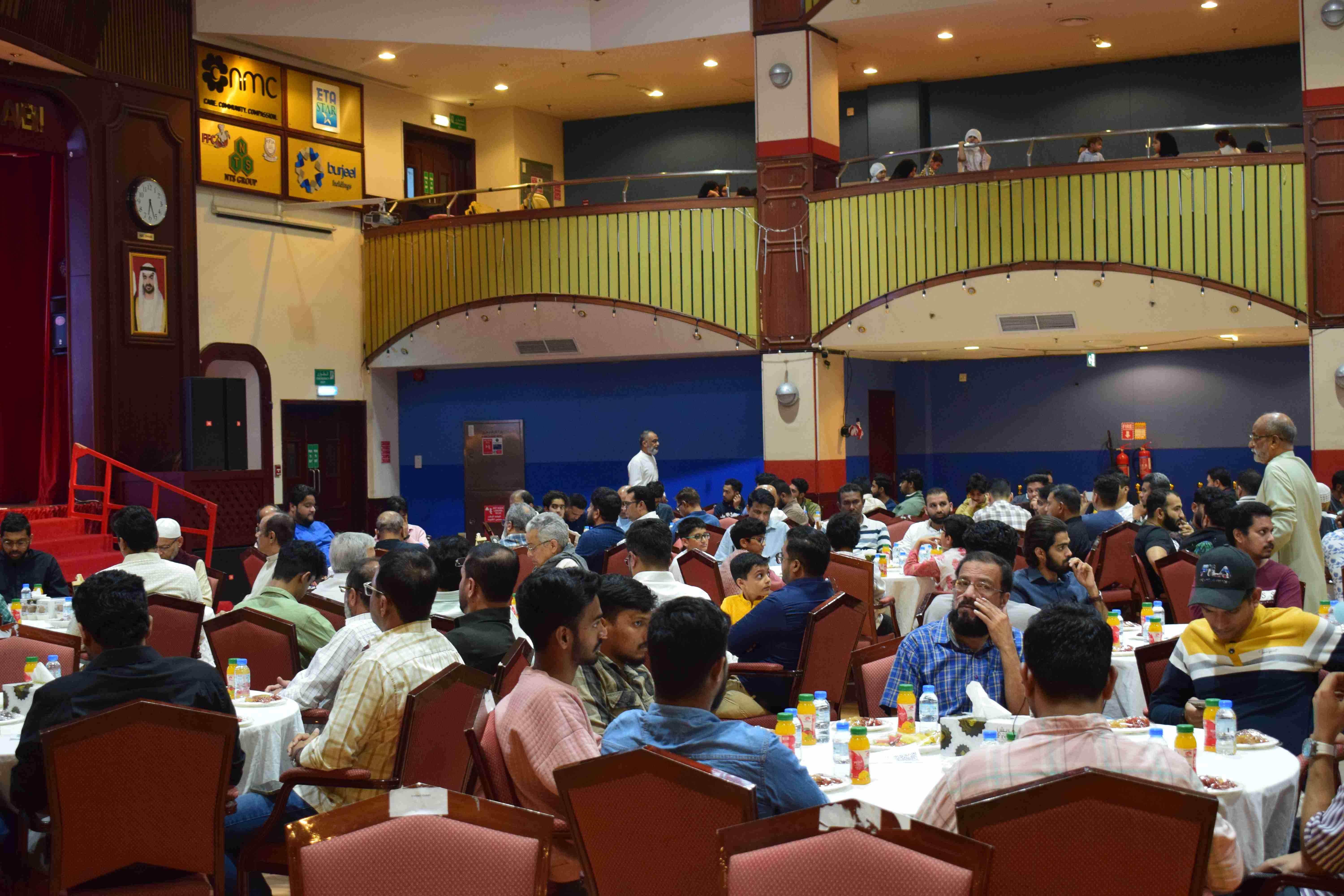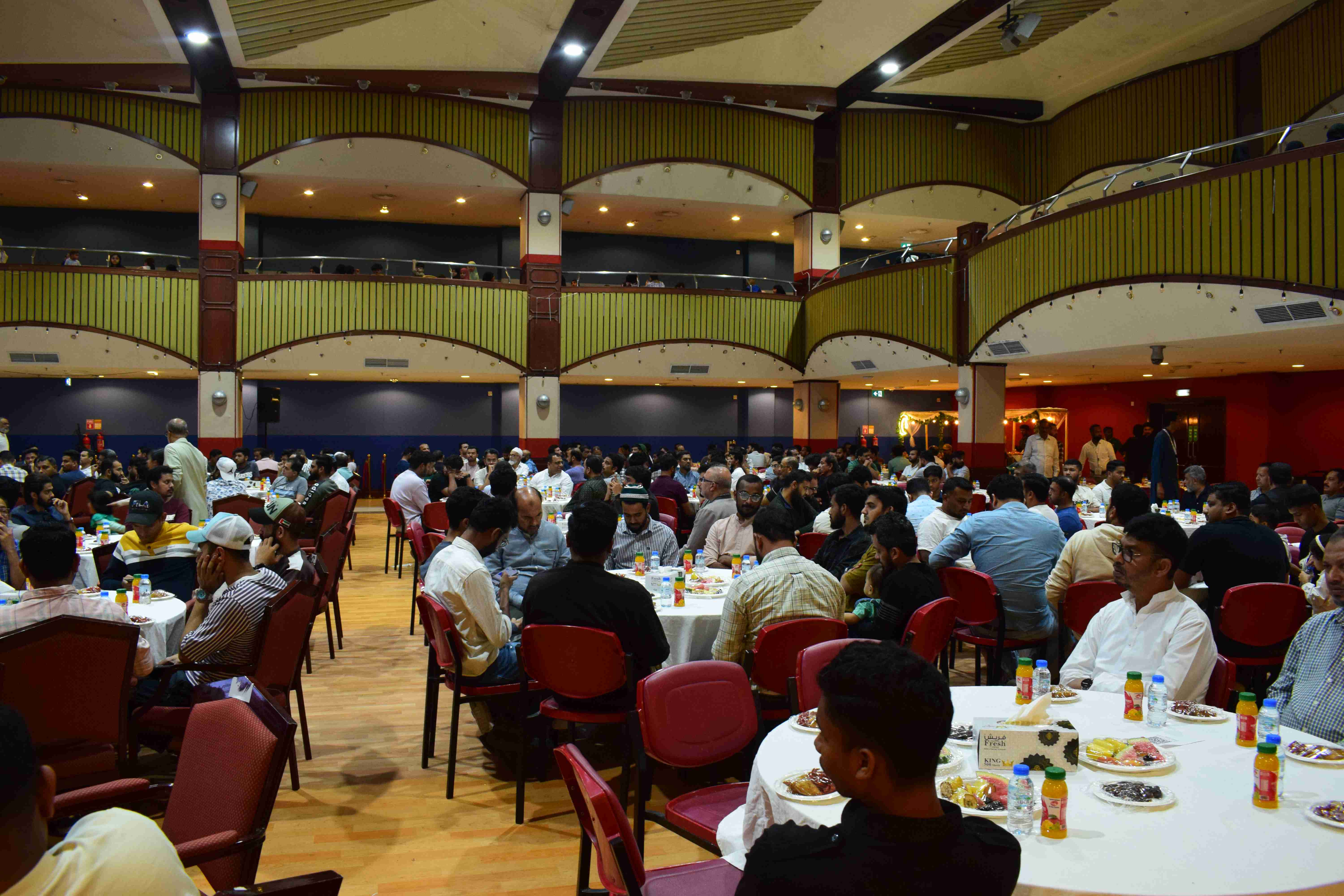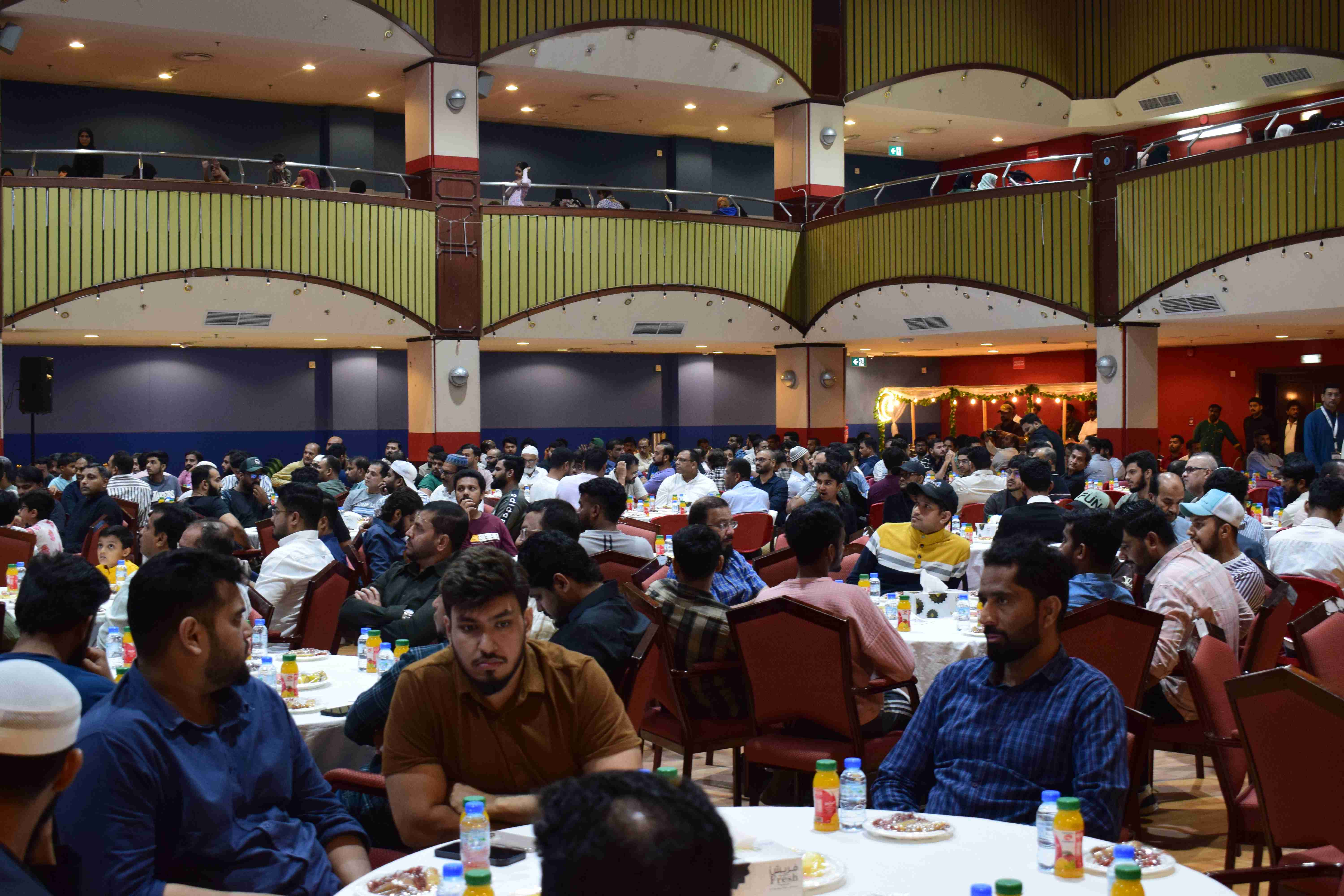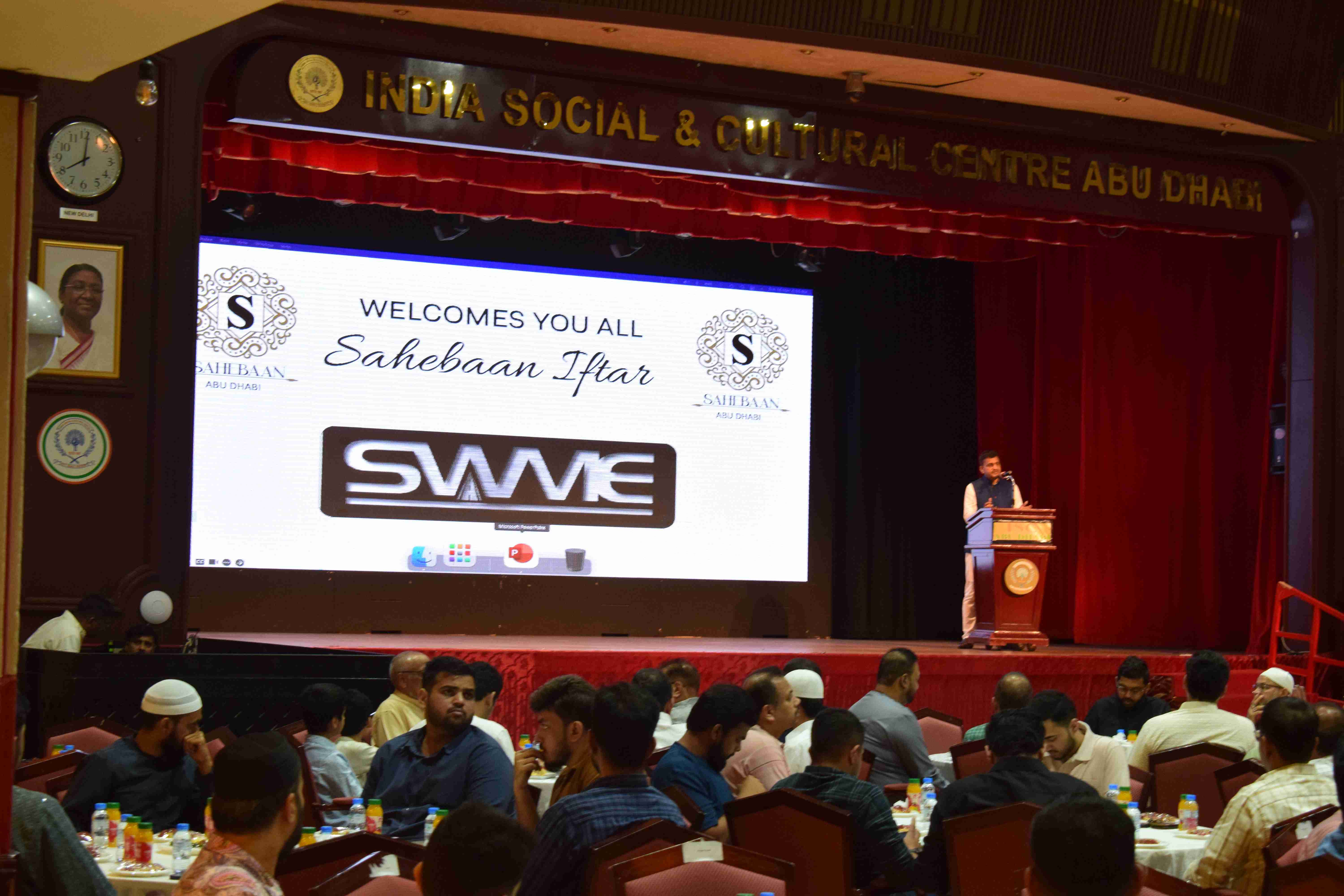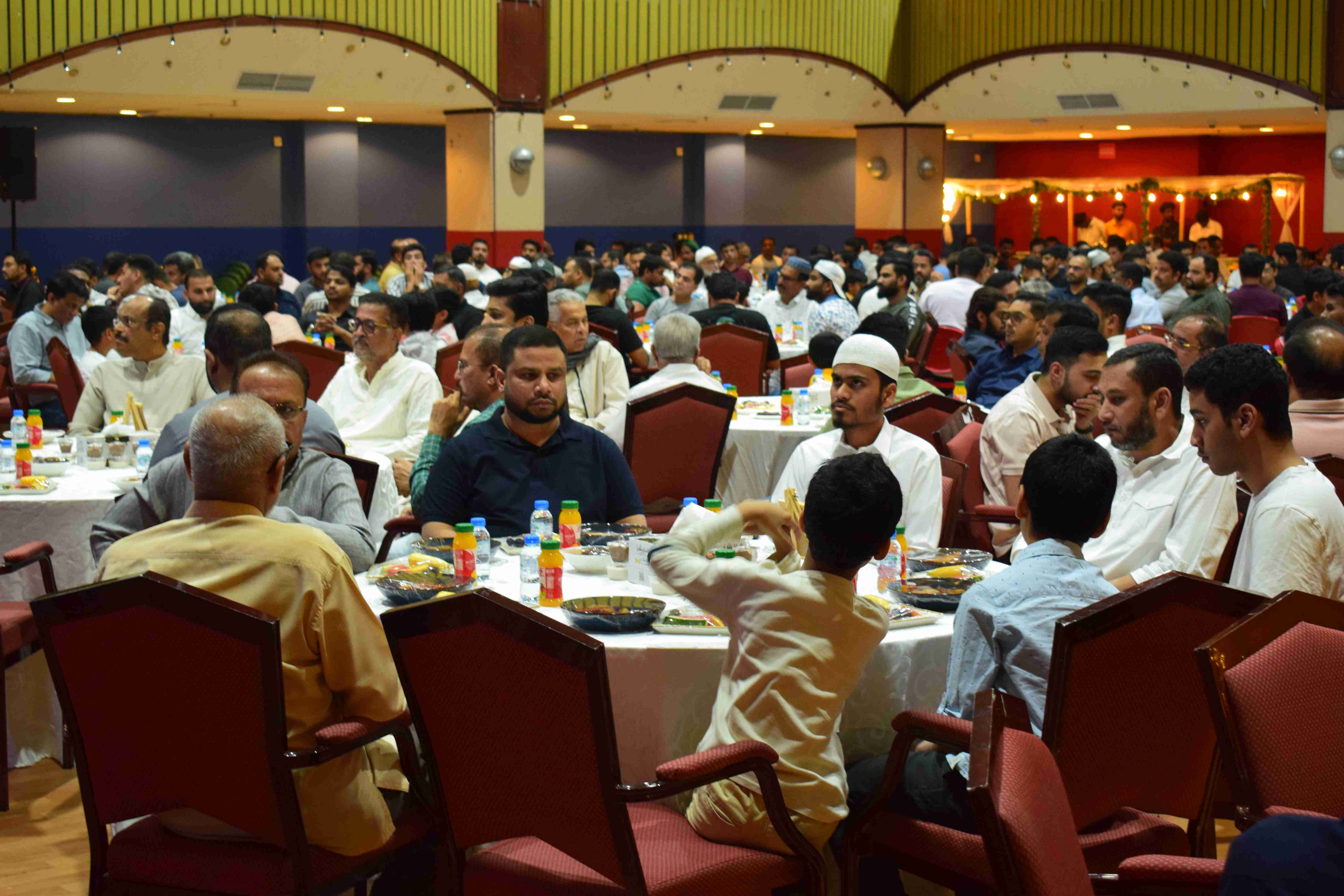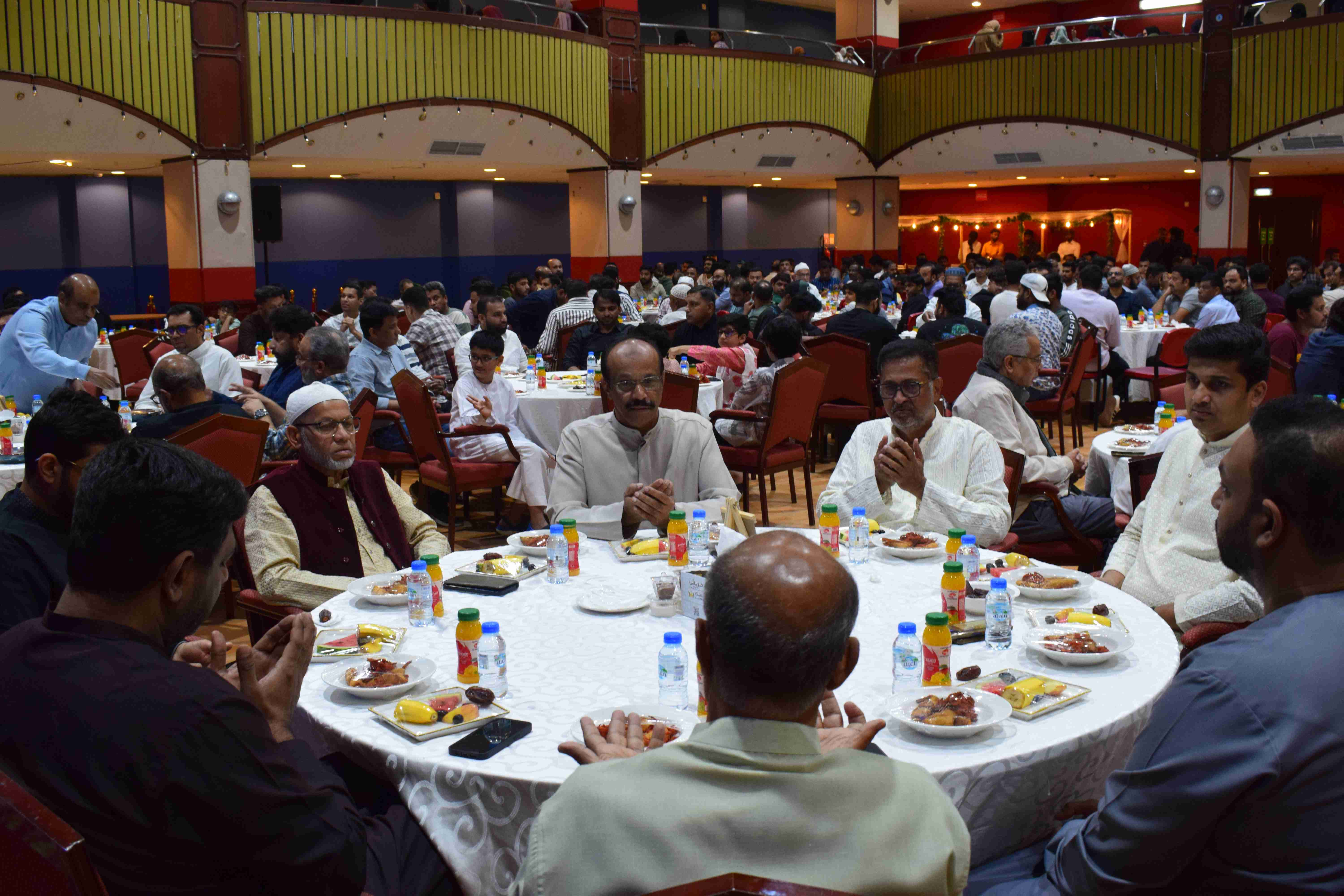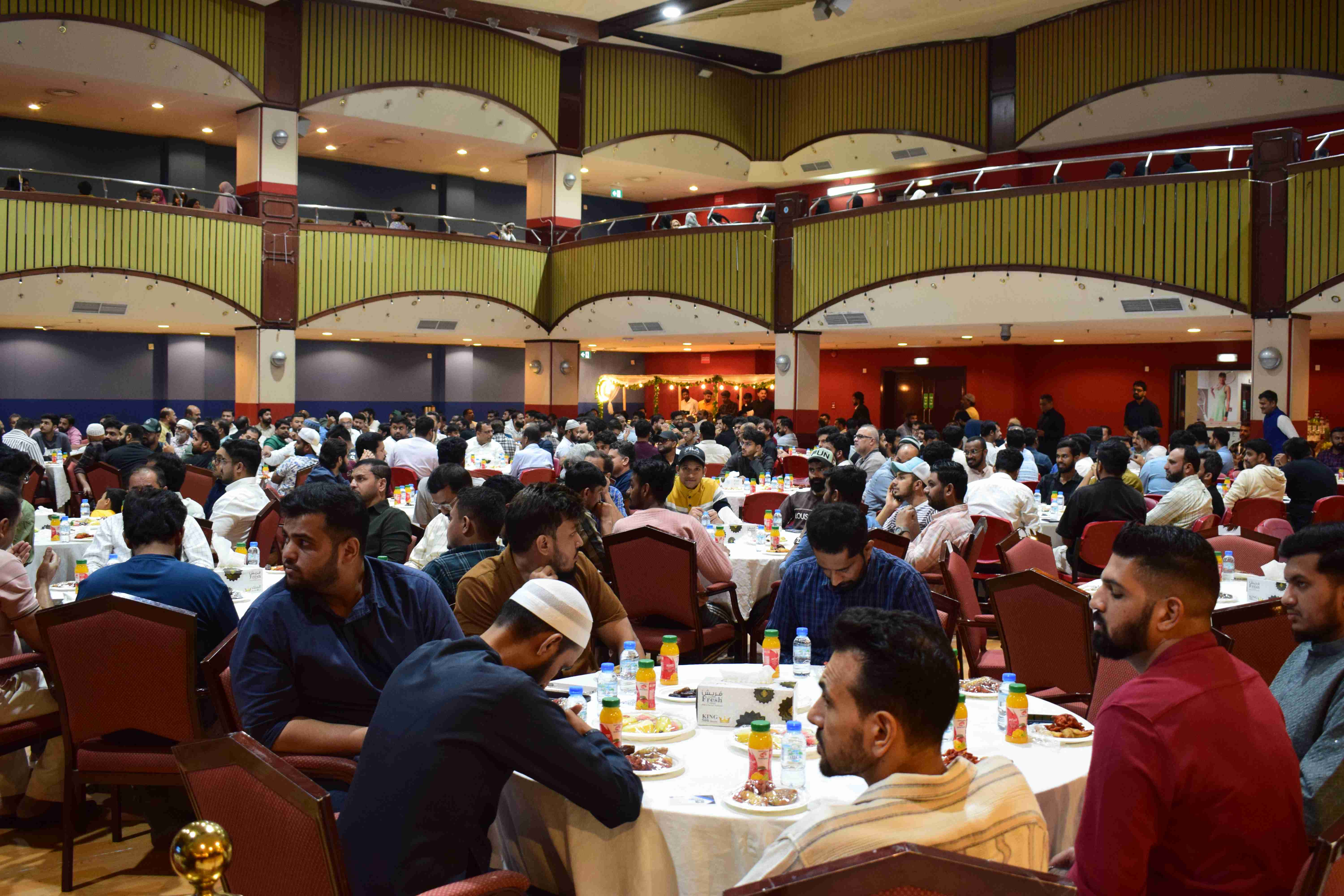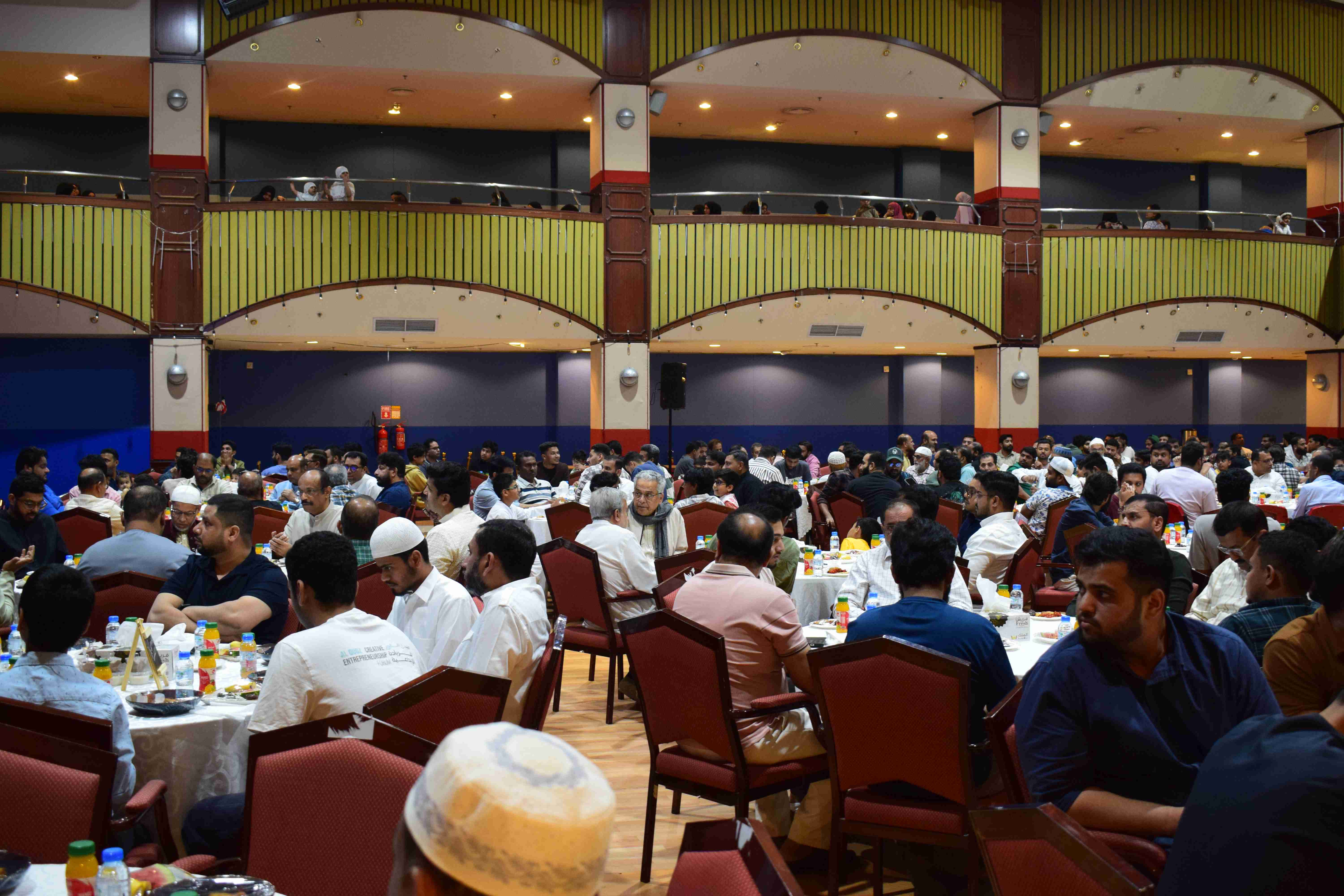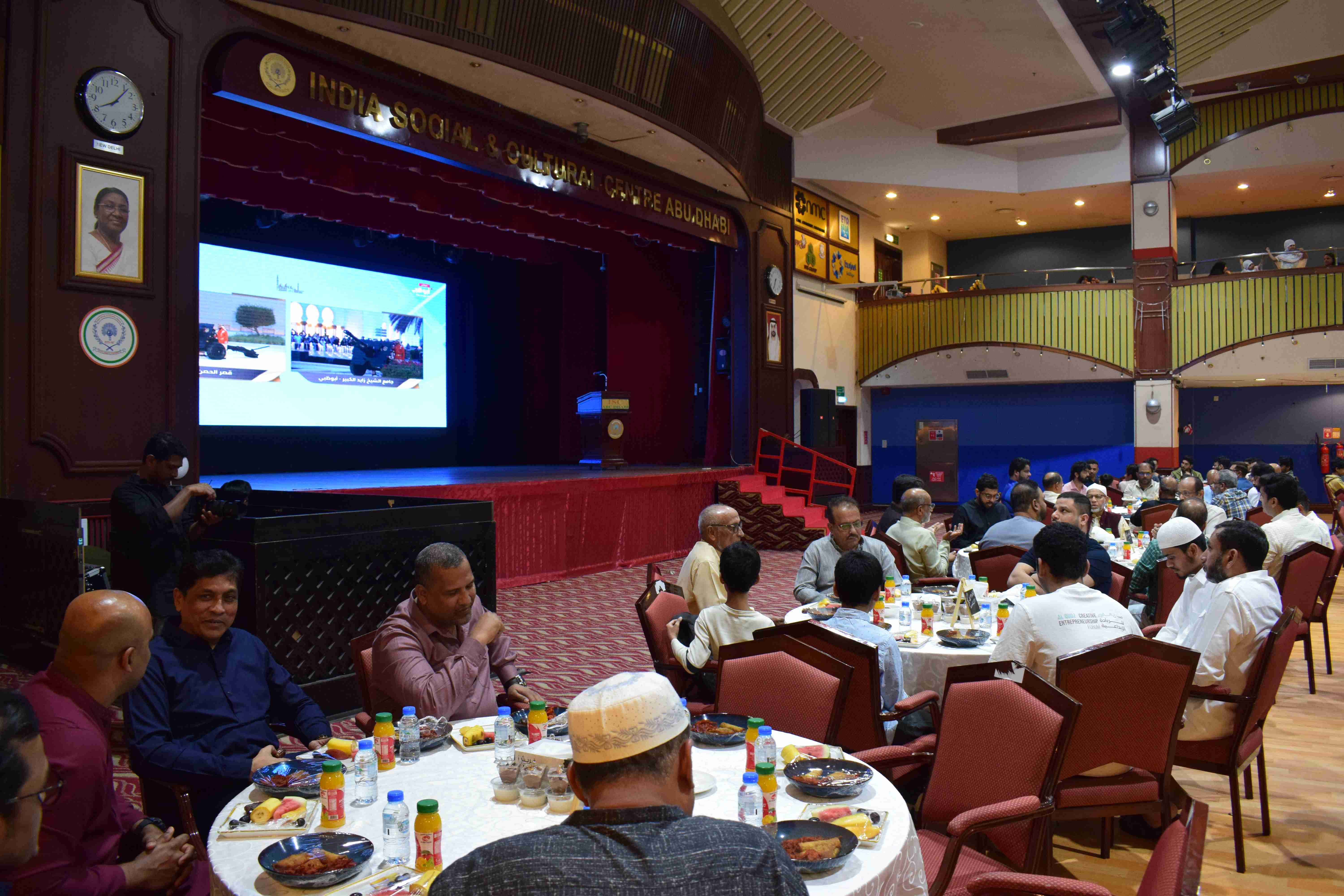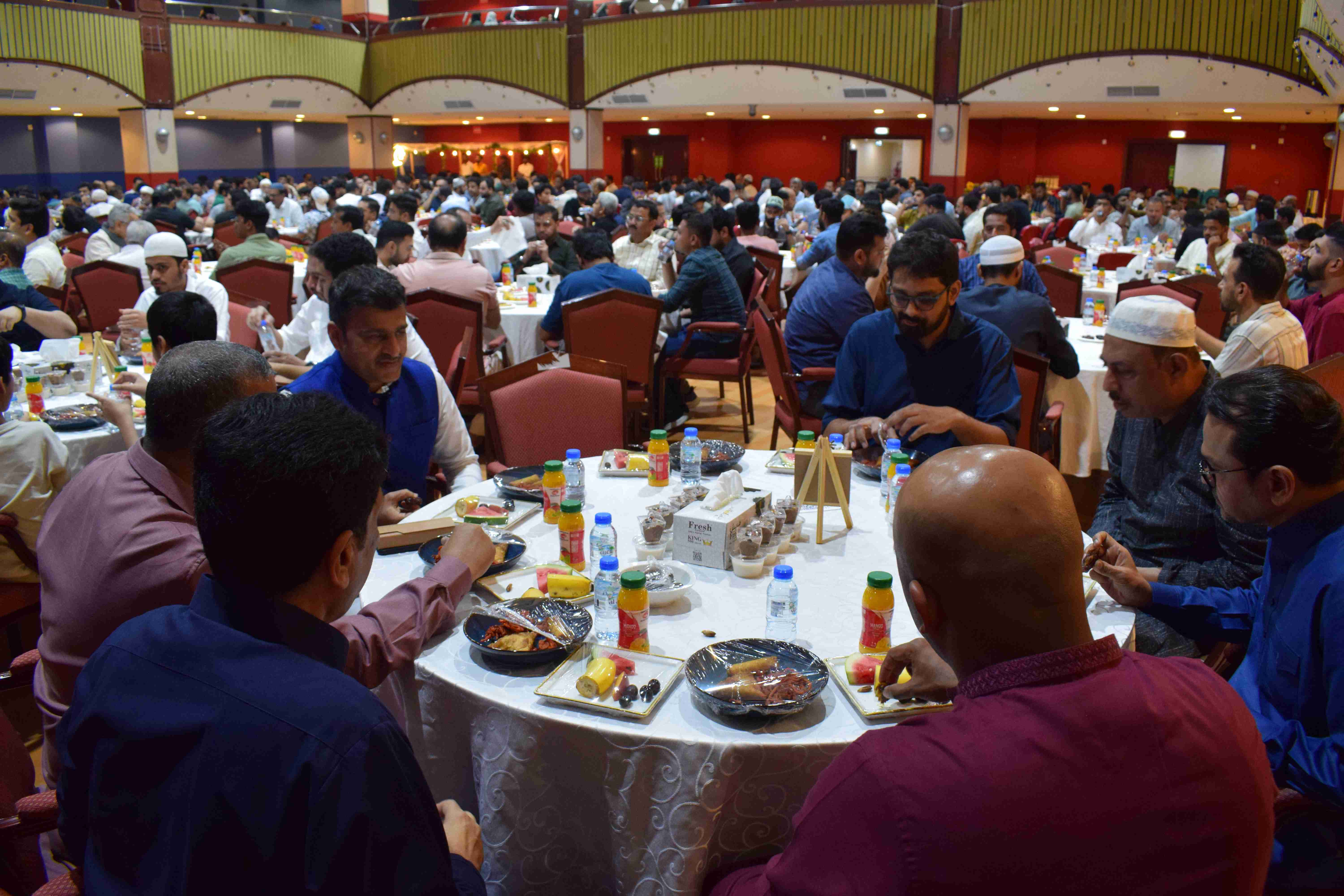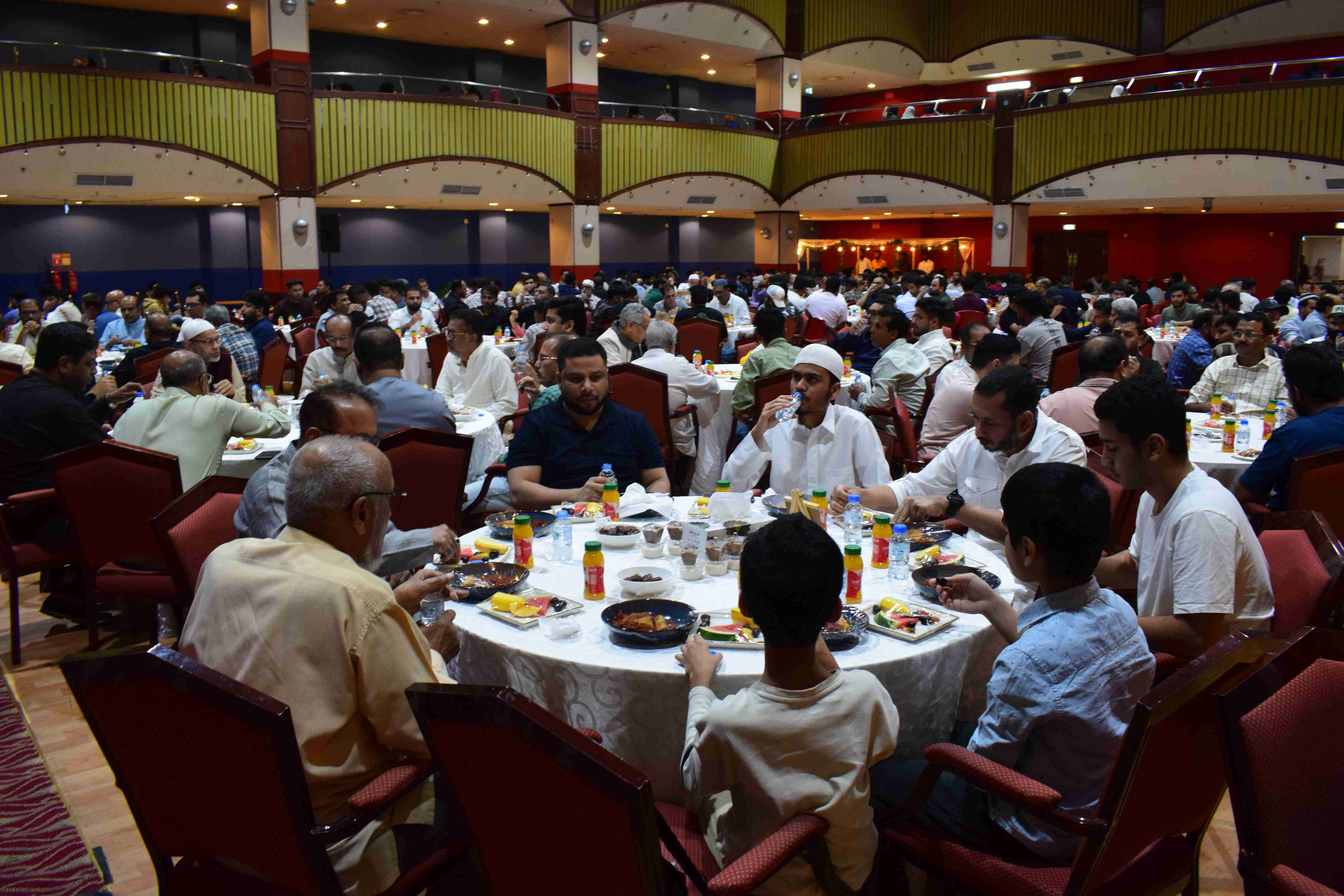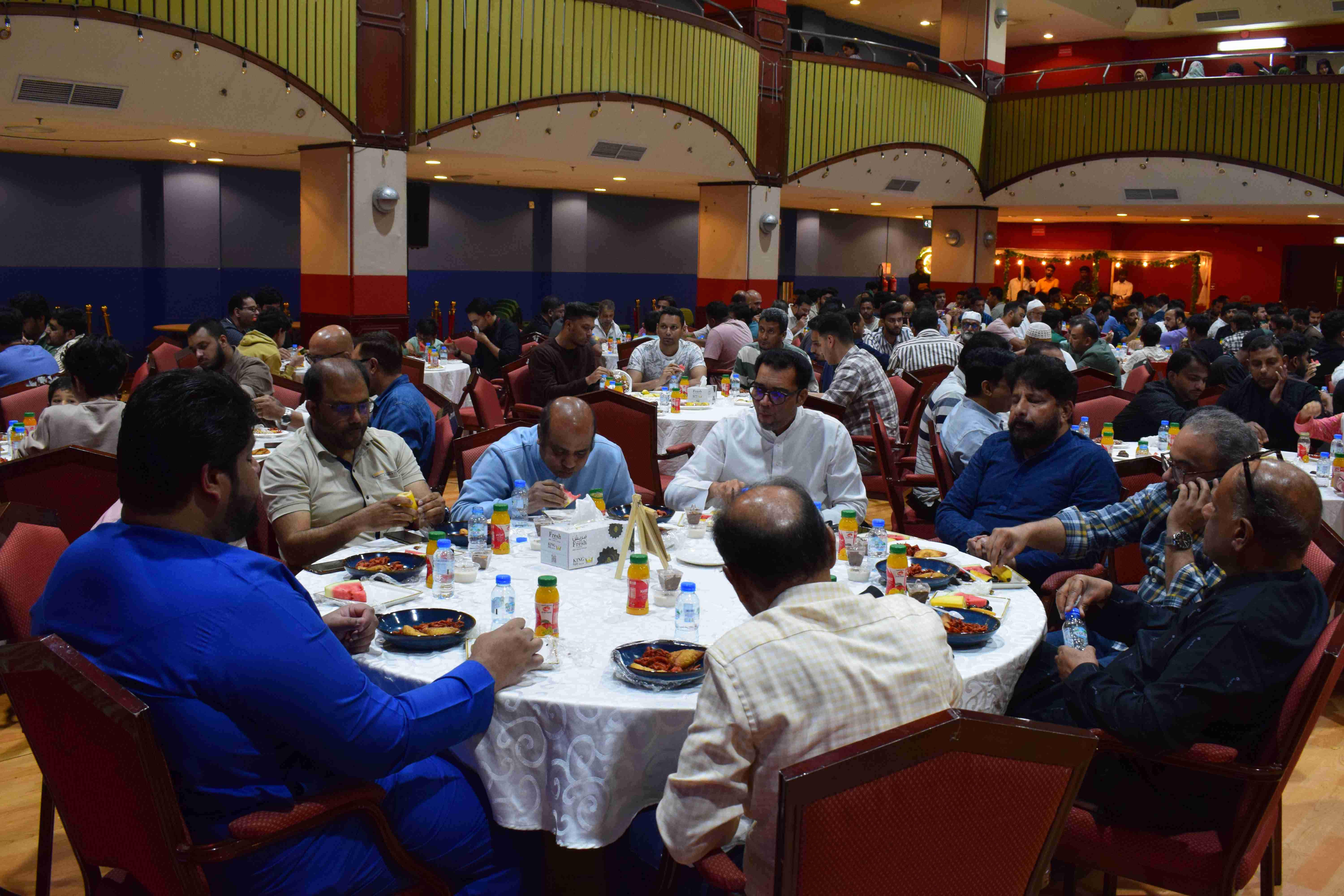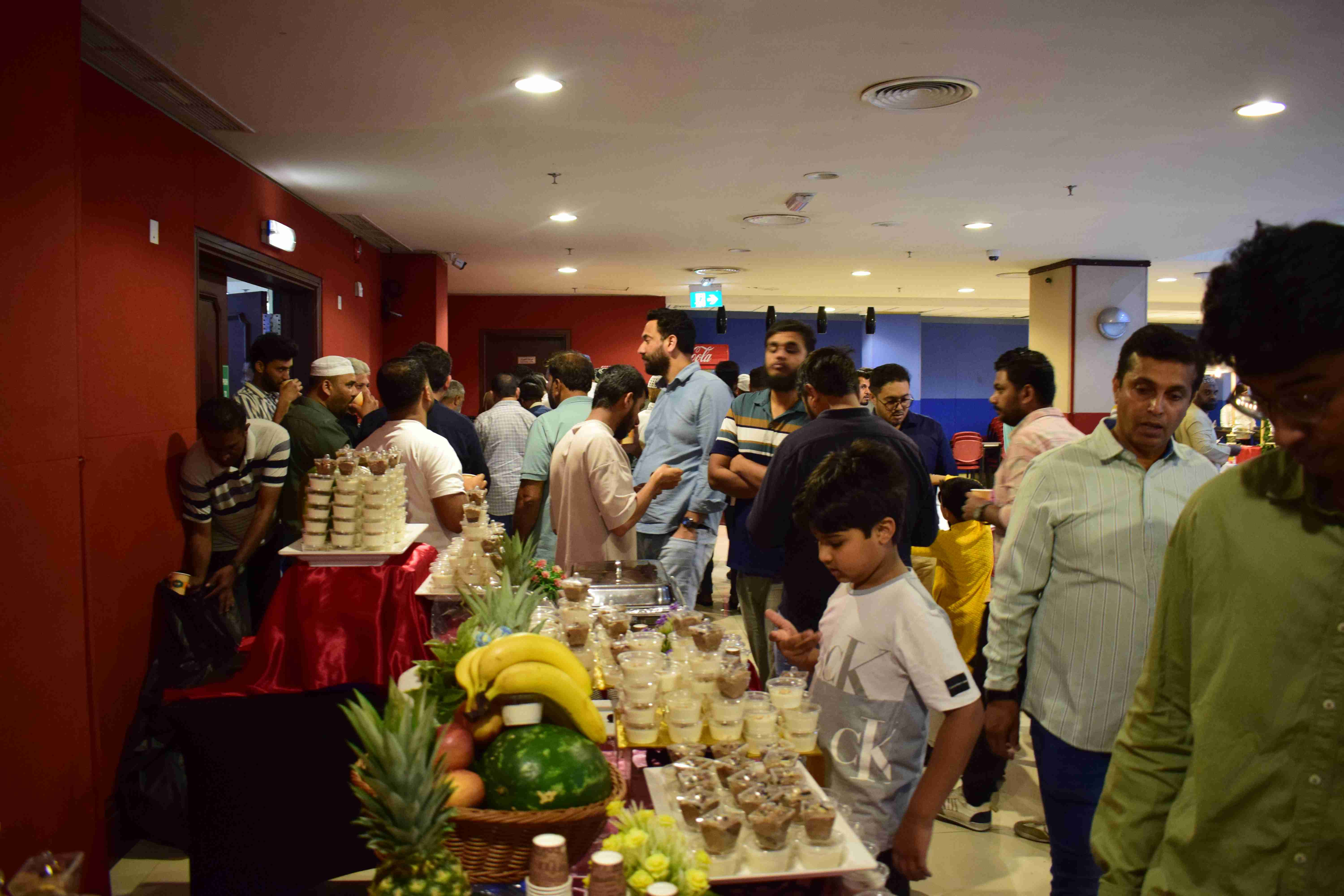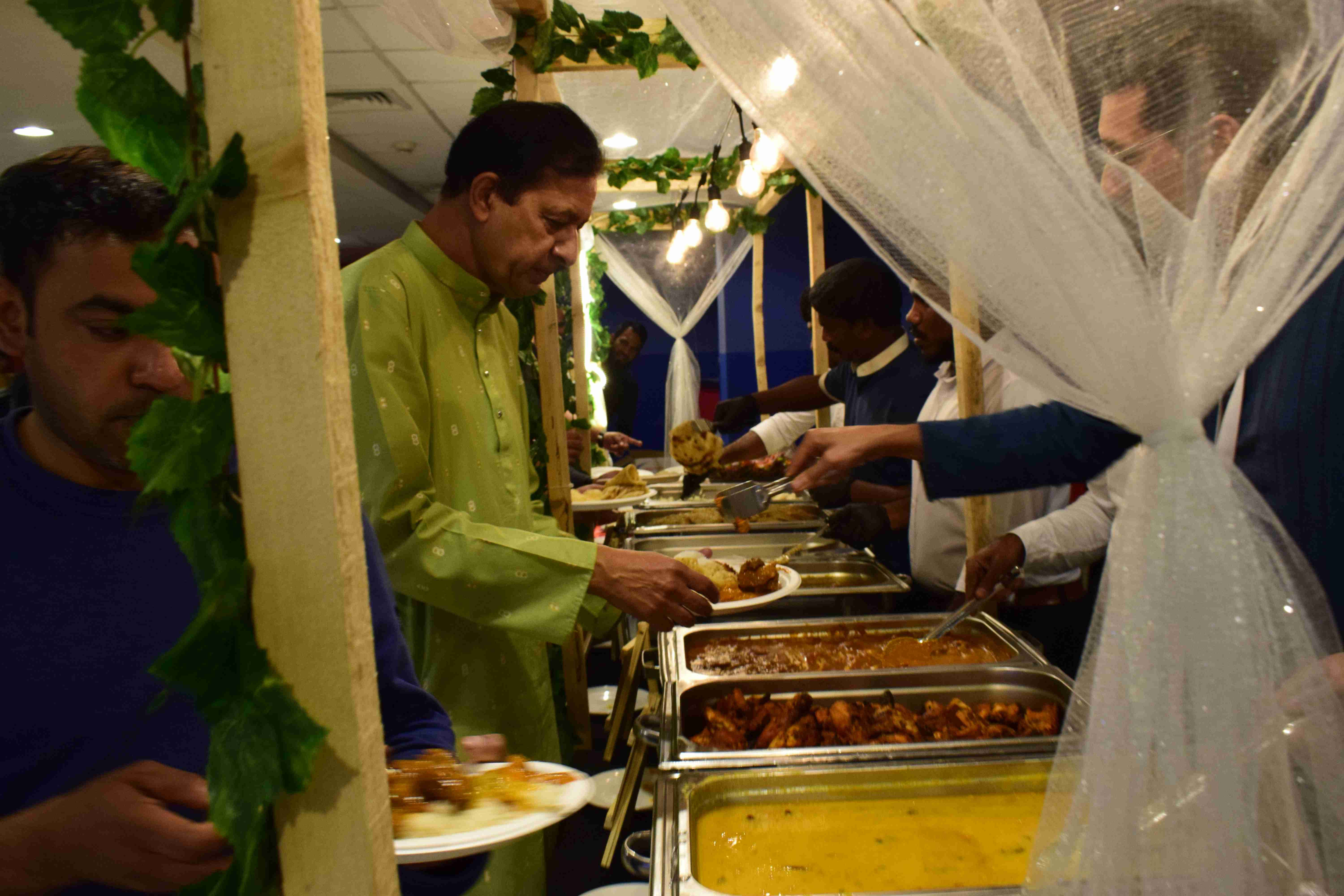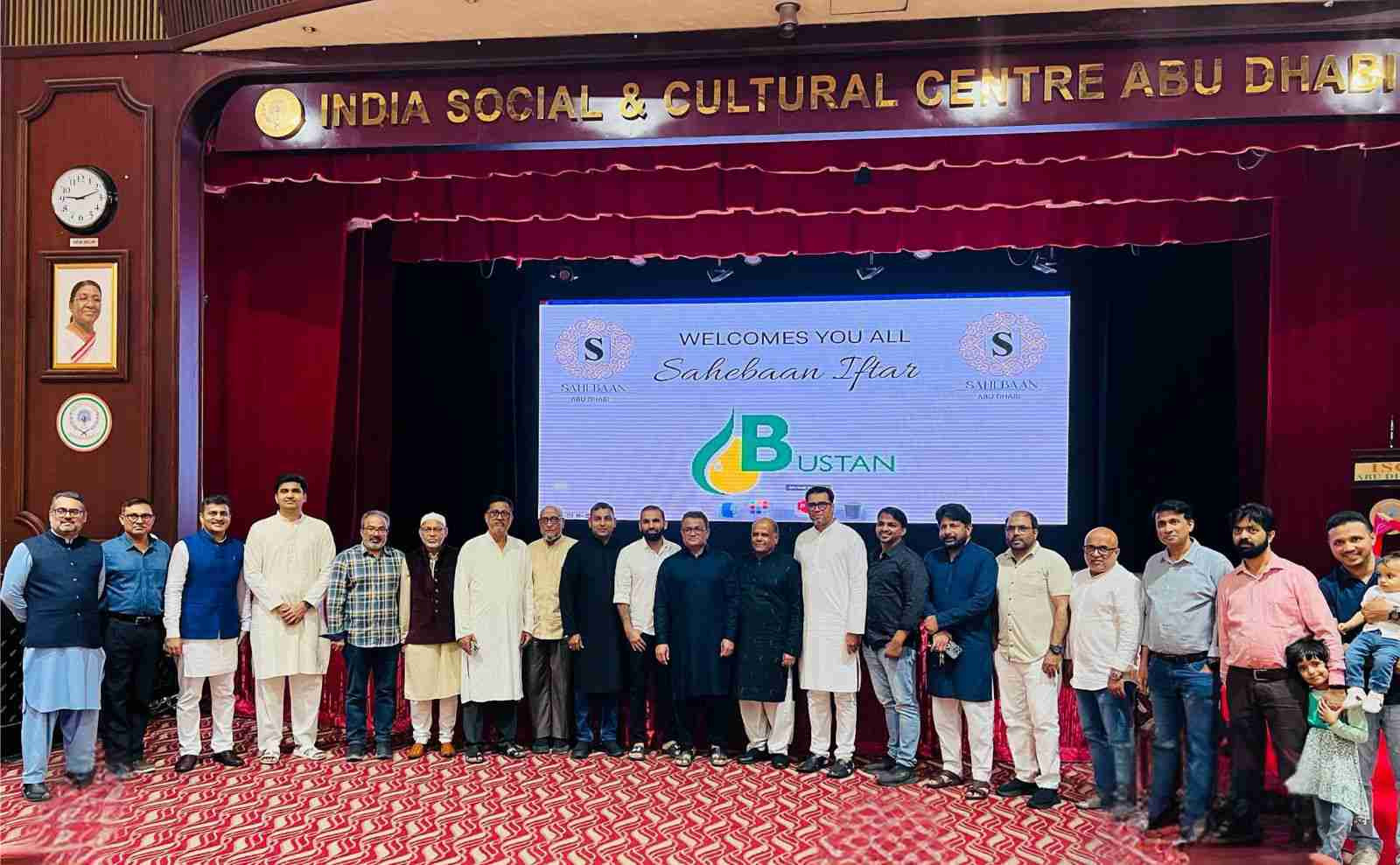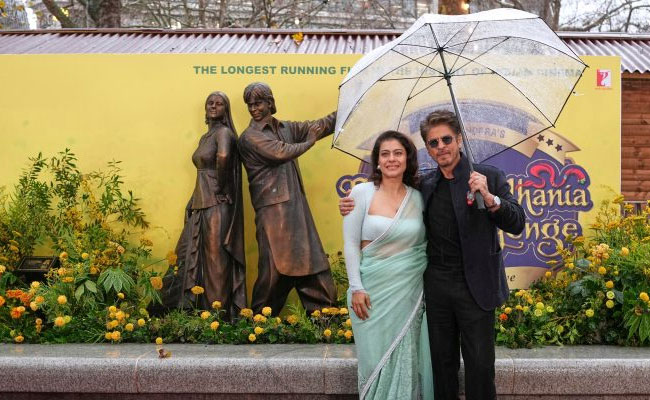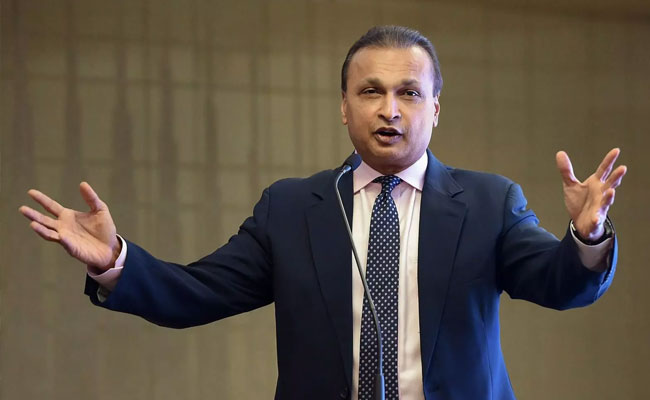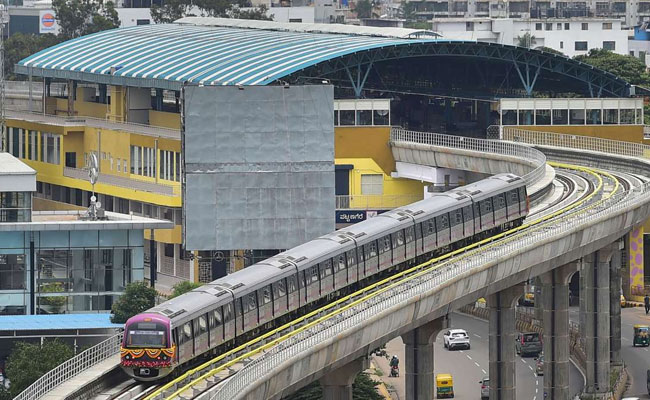Abu Dhabi: The Abu Dhabi Sahebaan Community, representing the Urdu-speaking Muslim community from Dakshina Kannada and Udupi districts, hosted a grand Iftar get-together on March 16, 2025, at the India Social and Cultural Centre (ISC), Abu Dhabi. The event brought together community members and their families for an evening of spiritual reflection and camaraderie.
The gathering began with the recitation of verses from the Holy Quran, followed by a welcome speech by Althaf M.S., who highlighted the legacy of Sahebaan Abu Dhabi Iftaars and their role in fostering community bonding. The program was compered by Mohd Ajmal Jamal, while Abdul Ahad welcomed the guests.
The event witnessed the presence of distinguished Sahebaan members from various emirates and India, including Siraj Ahmed, Javed Hassan, Abdul Shukoor Tonse, and representatives from the Beary Welfare Forum.
Several community well-wishers extended their support, including Abu Mohammed, Adil Shamshuddin, Abdul Rahim Dawood, Rizwan Aziz, K. Mohd Ansar, Akram Mohd, Mohd Yaseen, Irfan Abdul Rahim Sheikh, Yunus Sheik, Amjad Khalife, Adil Hussain, Fahad Muktar, Mohd Asif, Arshad Ahmed, CA Hanif Mohd, CA Samiulla Mohd, Ajmal Jamal, Mohsin Shaikh, Ansar Byndoor, and Althaf M.S.
The successful execution of the event was ensured by Team Sahebaan, with dedicated efforts from volunteers Imdadulla, Rihyaz, Zahid Shah, Gafoor Sha, Shamshuddin Pasha, and Abdulla Kazi, supported by a young and energetic Sahebaan volunteer team.
The organizers expressed their gratitude to all attendees for their participation and support, reinforcing the spirit of togetherness within the Sahebaan community in Abu Dhabi.
Let the Truth be known. If you read VB and like VB, please be a VB Supporter and Help us deliver the Truth to one and all.
London (PTI): Bollywood stars Shah Rukh Khan and Kajol huddled under an umbrella on a rainy Thursday in London to unveil their bronze likeness from an iconic ‘Dilwale Dulhania Le Jayenge’ scene.
The sculpture of the duo joins Leicester Square’s ‘Scenes in the Square’ trail depicting memorable shots from some of the world’s most famous films, with ‘DDLJ’ marking a Bollywood first and the 30th anniversary of the 1995 box-office hit. It is in this popular London square that SRK as Raj and Kajol as Simran first cross paths unknowingly.
“DDLJ was made with a pure heart. We wanted to tell a story about love, how it can bridge barriers and how the world would be a better place if it had a lot of love in it, and I think this is why 'DDLJ' has had a lasting impact for over 30 years now," said Khan.
“Personally, 'DDLJ' is part of my identity, and it is humbling to see film, and Kajol and me, receiving so much love since it was released,” he said.
He expressed his gratitude to the Heart of London Business Alliance, behind the cinematic trail at Leicester Square, for celebrating ‘DDLJ’ and “immortalising” its lead stars.
“Seeing ‘DDLJ’ become the first Indian film to be honoured in the iconic Scenes in the Square trail is an emotional moment and has brought back so many memories.
"I feel immense pride knowing the film has been embraced around the world, and I want to share this moment with the entire cast and crew of ‘DDLJ’, my friend and director Aditya Chopra and the Yash Raj Films family. This is a moment I will never forget,” added Khan.
Kajol, joined by her daughter Nysa and son Yug, posed with Khan in front of the statue as she braved the rain in a green saree.
“It’s incredible to see ‘Dilwale Dulhania Le Jayenge’ continue to receive so much love, even 30 years later. Watching the statue being unveiled in London felt like reliving a piece of our history - a story that has truly travelled across generations,” said Kajol.
“Seeing it find its rightful place in Leicester Square, a location of such enormous significance to ‘DDLJ’, makes this moment even more special. For the film to be honoured in this way in the UK – the first Indian film to receive such recognition – is something that will forever stay in the hearts and minds of all the ‘DDLJ’ fans across the world,” she said.
Their statue, captured in a dancing pose from the hit song ‘Mehndi Laga Ke Rakhna’, joins the likes of Harry Potter, Bridget Jones, Mary Poppins, and Batman in what is dubbed as an ever-growing celebration of movie magic in a square packed with multiplex cinema screens.
“When ‘Dilwale Dulhania Le Jayenge’, DDLJ, was released 30 years ago, the film became a defining moment for Indian cinema and changed the face of the industry, capturing the hearts of everyone who saw it all over the globe," said Akshaye Widhani, CEO of Yash Raj Films.
“We’re thrilled to be the first Indian film to be represented in ‘Scenes in the Square’. It also marks 30 years of DDLJ, a film that has spread love and joy globally, and shows the cultural impact it has had in UK.
“We are honoured that our superstars and our film are being recognised on the world stage alongside the Hollywood elite, from Gene Kelly to Laurel & Hardy to Harry Potter. This statue will be a great way to express the international appeal of Indian movies and build bridges amongst communities through cinema,” he said.
Since its release in 1995, ‘DDLJ’ has become the longest-running film in Hindi cinema history.
Ros Morgan, Chief Executive at Heart of London Business Alliance, said: “We’re proud to welcome global megastars Shah Rukh Khan and Kajol to our Scenes in the Square trail.
"Dilwale Dulhania Le Jayenge is a cinematic phenomenon that has shaped generations, and London’s first tribute to Indian cinema honours a story whose magic continues to captivate audiences worldwide.”
It is a particularly special year for the film, with a musical based on the romance playing to packed houses at Manchester’s Opera House earlier this year. Aditya Chopra reprised his role as director of the English language stage production, ‘Come Fall In Love – The DDLJ Musical’, which revolved around the love story of Simran and Roger.
The script was a nod to the original as it followed Simran as a young British Indian woman who finds herself engaged to a family friend in India in an arranged marriage. However, the plot thickens when she falls in love with a British man named Roger.
Bade Bade Deshon Mein, Aisi Chhoti Chhoti Baatein Hoti Rehti Hain, Senorita!
— Shah Rukh Khan (@iamsrk) December 4, 2025
Thrilled to unveil the bronze statue of Raj & Simran at London’s Leicester Square today, celebrating 30 years of Dilwale Dulhania Le Jayenge (DDLJ)!
Incredibly delighted that DDLJ is the first Indian… pic.twitter.com/8wjLToBGYc

